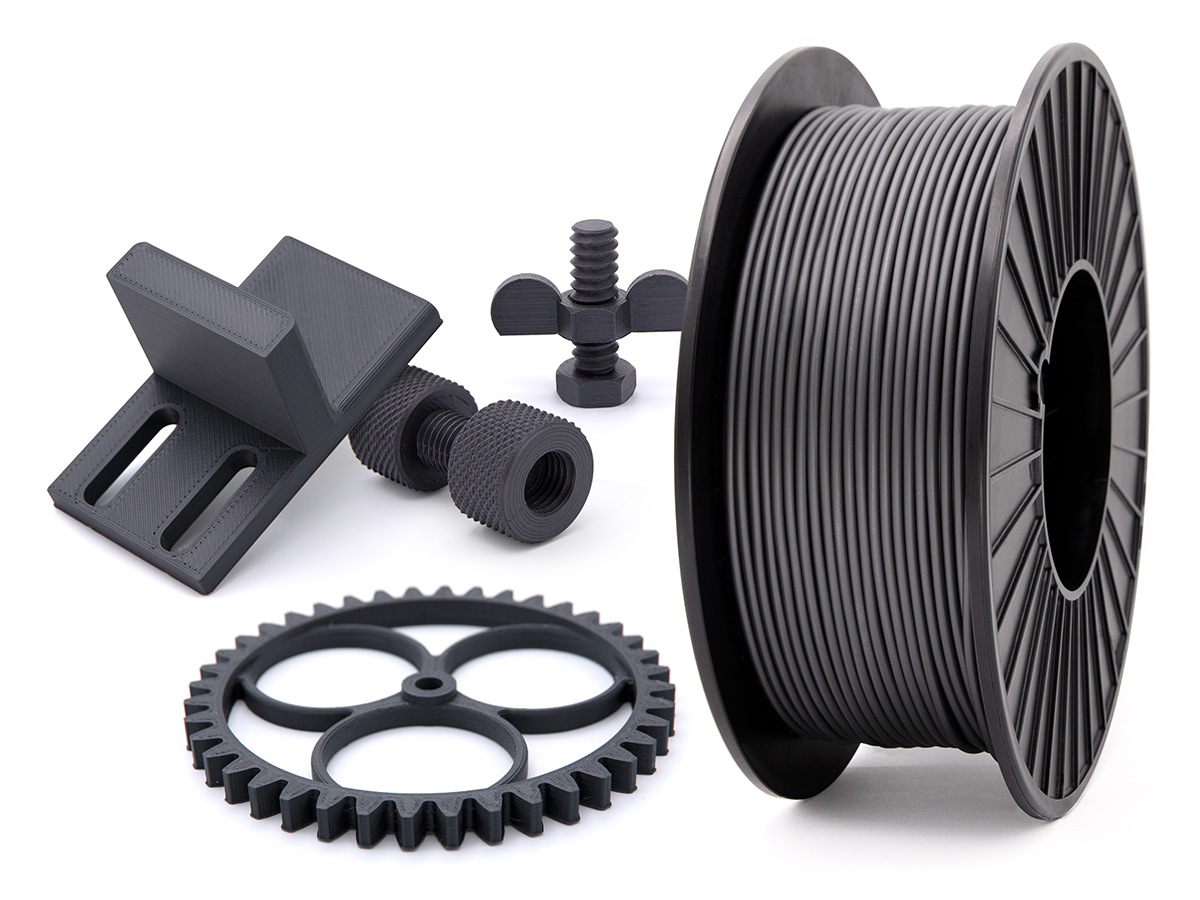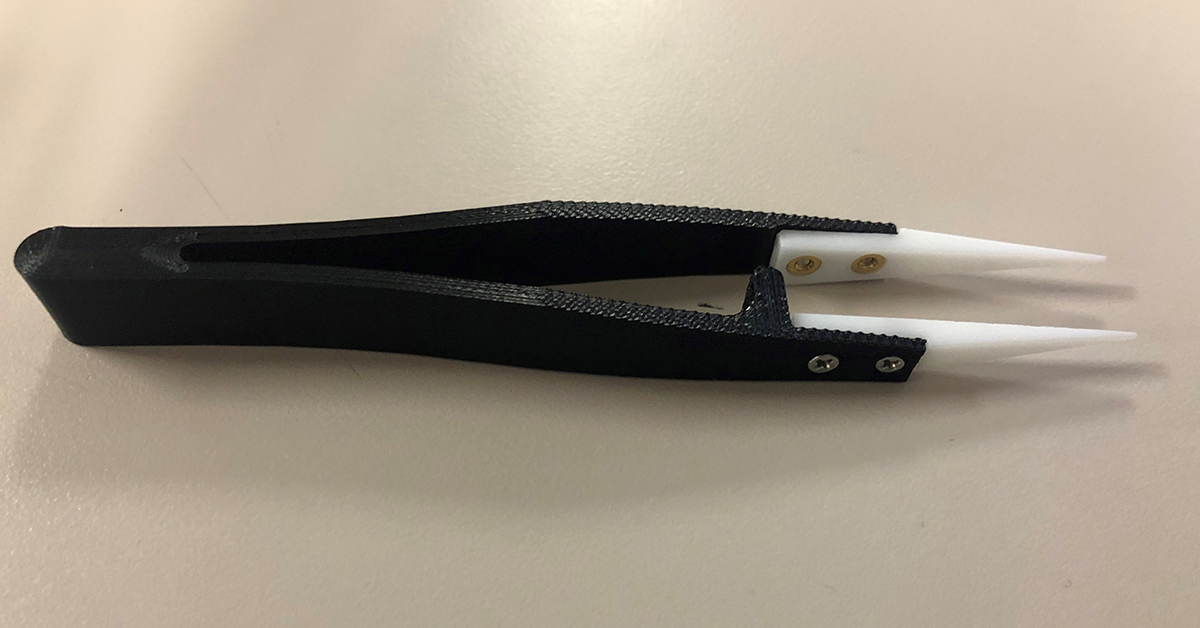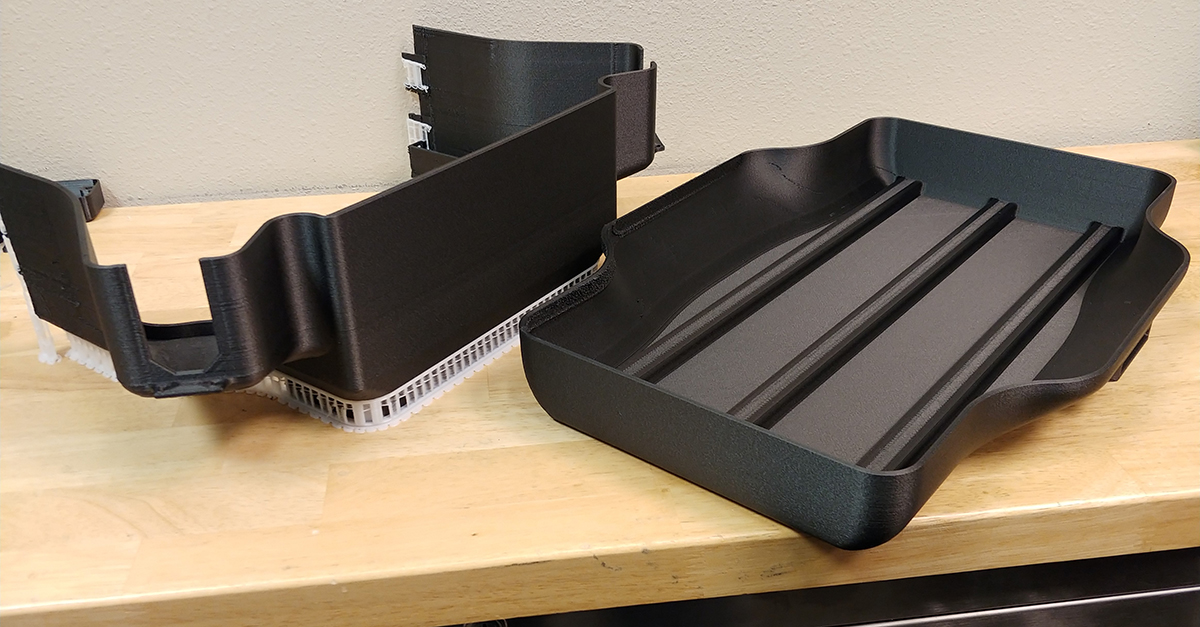Five Reasons to 3D Print Tooling, Jigs and Fixtures

Jigs and fixtures are critical to improving productivity and safety. Therefore, if you're assembling products—anywhere—you should be 3D printing your tooling, jigs and fixtures within your production facility. While the traditional manufacturing process makes these efficiency staples too costly for adoption in certain cases, a 3D-printed jig or custom fixture can become reality faster than you think.
According to Jabil's 2021 3D Printing Trends survey, additive manufacturing applications have skyrocketed in just two years. Today, more than half (57%) of participants surveyed report that their company uses 3D printing for tooling, jigs and fixtures, up from 30% in 2017 and 37% in 2019.
Additive manufacturing use for jigs, fixtures and tooling is growing rapidly.
The advantages of additive manufacturing are clear. In fact, survey respondents say production tooling is the third most positively impacted part of the product lifecycle, just behind prototyping and design. Moreover, using additive manufacturing, 58% say they can respond to issues on the production line faster; 55% say production costs are lower; 37% say tooling needs are no longer a manufacturing bottleneck.
In my experience, 3D printed jig and fixtures can provide more than 50% cost savings over outsourcing to an outside machine shop while reducing the lead times from weeks to one or two days. In some cases, the cost savings have been as high as 80%. Onsite, open-source desktop printing provides a low barrier to entry and, in most instances, is the right tool for the right job. Here are five reasons why the difference can be so dramatic:
1. New Material Advances
Using traditionally machined materials, such as aluminum, to hold the assembly fixture may cause marring, scratching and other damage to sensitive products. Materials such as PETG ESD or PA processed through a 3D printer can protect a finished product. New materials with properties similar to Delrin®, Nylon, ABS and UMHW PE enable better scratch and mar performance, better dimensional stability, as well as the ability to withstand harsh chemical baths or painting.
For example, Jabil recently released a new additive material, Jabil PA 0600, which delivers low coefficient of friction and the level of strength and stiffness required for highly regulated industries like aerospace and automotive. This versatile filament is well suited for a variety of additive manufacturing applications, including the production of jigs, fixtures and tooling, due to its stability and wear-resistance.

Parts, Gear & Spool of POM-Alternative Filament
2. A Global Network with Local Performance
Before beginning production, in order to extract optimal performance out of 3D printing materials, select a partner that has a global Additive Manufacturing Network to test and validate material performance in a manufacturing environment.
It is easier to test, modify and validate the final performance of tooling, jigs and fixtures components printed near the production line to further improve the assembly process. Printing on open source, low-cost desktop printers empowers shop floor employees, improves overall efficiency and provides significant savings to the overall business.
Once a 3D-printed fixture or manufacturing tool is perfected, it can be digitally transferred to facilities around the globe so the enhanced performance is repeatable and globally distributed, digitally. 3D printers also speed up the replacement of specific components and can keep production lines up and running with speedy replacement of MRO components.

3D Printed Tweezers
3. Exponentially More Cost-Effective
When examining the value of additive manufacturing, it's helpful to break down the cost of creating tooling, jigs and fixtures through a traditional machine shop:
- It requires CNC machining and other metal fabrication equipment, as well as skilled employees to operate it.
- 2D drawings must be generated to communicate critical tolerances, and an RFQ must be generated if outsourced.
- If produced off-site, time and transportation costs in conveying it between the machine shop and the manufacturing facility drive up overall costs.
- The cost of managing procurement from outside vendors can be a hidden cost that is rarely accounted for but requires resources from Engineering and Procurement.
- Fitting a small fabrication job into the machine shop's workflow can take several days and sometimes multiple weeks.
- Toolmakers can be scarce and are often underutilized, making jigs, fixtures and tooling parts when they could be crafting more complex, higher-value tooling.
- Because external machine shop fees include additional overhead costs, the overall cost of externally sourced tooling, jigs and fixtures is higher when compared to producing components internally.
Also consider that every tool, jig or fixture design iteration, whether involving changes in dimension or functionality, will incur similar costs over and over. And these costs will continue to build with each new iteration and with the addition of each new manufacturing facility. As a result, production teams often tolerate substandard fixtures. If 3D-printed fixtures are available the next day, fast iteration is possible while providing optimal configurations, improving the production process, increasing quality and supplying a more ergonomic work environment.
Compared to legacy processes, we have found that many 3D-printed tooling, jigs and fixtures can save hundreds or even thousands of dollars. A recent survey within one of our plants showed savings of $1,500 to $2,500 on average. With the average costs of a desktop 3D printer around $5,000, the initial investment can be recouped in just a few jobs. In fact, we find that the ROI is realized in the first 30 to 45 days of use.
Additive manufacturing also supports LEAN manufacturing by enabling the production of highly efficient workstations that are cost-effective to build. 3D printing specialized in tooling to maximize efficiency can cost as little as $10 per tool. In comparison, it could cost $1,500 or more to have the same tooling crafted at a machine shop. That translates to workstation designs that can be continuously improved via onsite 3D printing to test, tweak, redesign and iterate until every workstation is optimized and hitting LEAN standards. Further, this process can be digitally transferred and repeated at other facilities.
INDUSTRY TAKES NOTICE
“Creating parts in-house has the potential to reduce inventory and the associated capital significantly and to reduce idle time because there is no wait time for deliveries. 3D printing allows tool [and] jig manufacturers to move away from reactive or schedule-based service models because digital data can be used to constantly monitor equipment health and predict future failures.”
-Pradeep Amladi, Vice President Global Marketing Head, High Tech, Manufacturing, Energy and Resources Industries for SAP, in an interview with Digital Engineering
4. Dedicated Agility
As noted earlier, 3D printing enables quick changes on the assembly line. This allows manufacturers to capitalize on dynamic changes in components and processes, improve the efficiency of today's shortened product lifecycles and take advantage of market opportunities.
Additive manufacturing can also integrate seamlessly with legacy technology to increase agility without stopping the line for extensive overhauls. With a 3D-printed fixture, a metal spring or contact point can still be included. When 3D printing is integrated at the right place and time on the assembly line, it can deliver any adaptations and adjustments needed to achieve the best possible performance.

3D Printed Manufacturing Aids
5. Create A Complex, Custom Jig, Fixture or Tooling
3D printing technology is highly capable of creating complex geometries that would be cost- and time-prohibitive through typical metal-working. Think about the functionality you could achieve if it were so easy to print and test new prototypes, then print and test them again.
Think about printing new prototypes such as:
- An alignment fixture used during a gluing operation
- An assembly fixture or nest to secure parts
- A chute to protect parts as they fall from an injection mold
- A template jig used to mark parts
- A masking fixture for a painting operation
Whether looking for a simple jig, an adapter for a vacuum loader, a quick coupling for a winder, a holding fixture for an assembly or a diverter on a hopper, 3D printing jigs, fixtures and manufacturing aids is almost always going to win the performance, cost, time, efficiency and adaptability game, especially when compared to outsourcing to a local machining operation. Additive manufacturing is simply the right tool for the right job, and businesses that fail to take advantage of it risk falling behind in the emerging era of digital manufacturing.
Download the 3D Printing Technology Trends Report
Jabil's third biennial report includes insights from over 300 individuals responsible for decisions around 3D printing at manufacturing companies on technology adoption, opportunities and challenges.